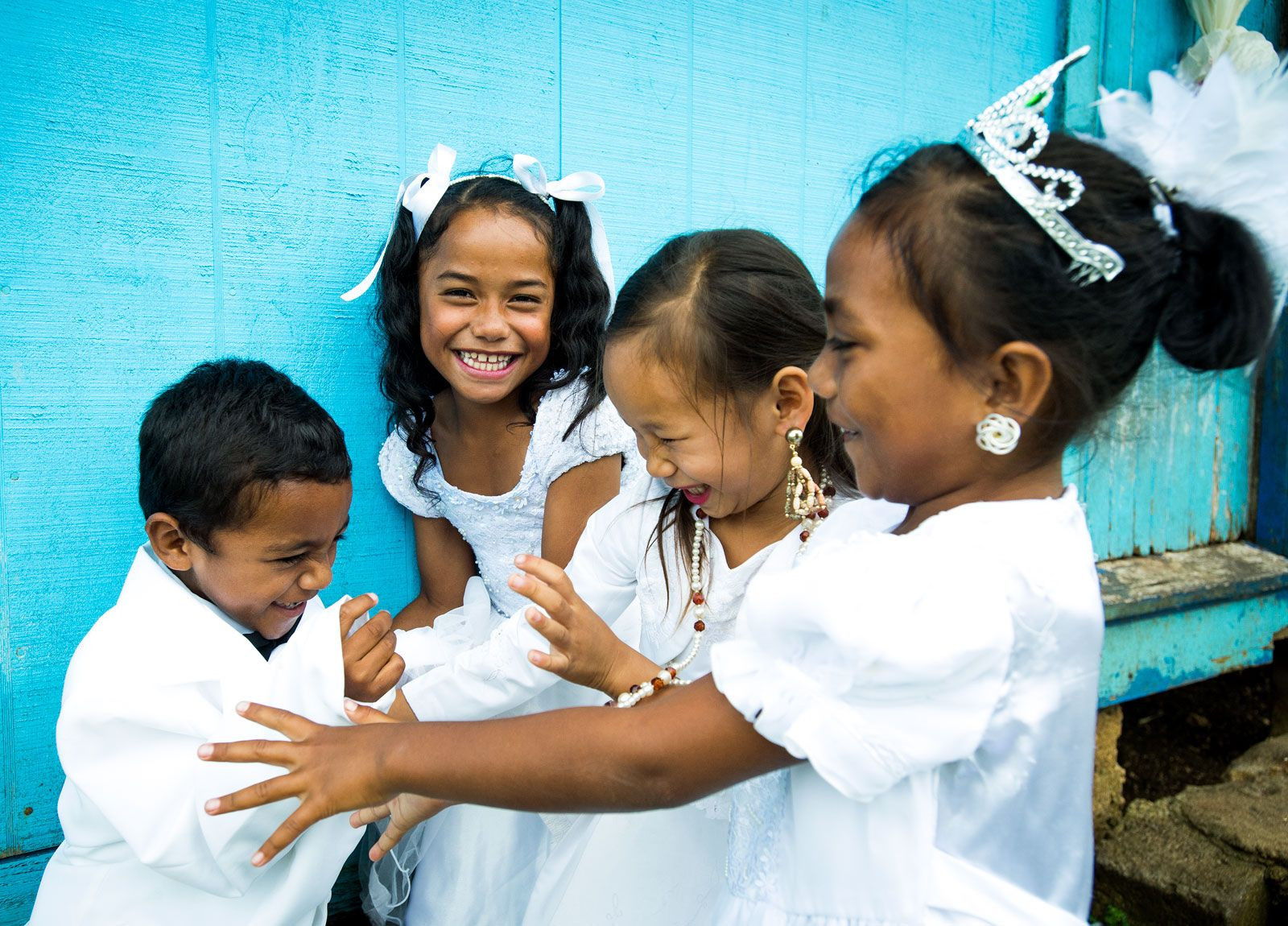Nestled in the vast expanse of the southwestern Pacific Ocean lies the Kingdom of Tonga, a unique archipelago nation brimming with natural beauty and rich Polynesian culture. Often referred to as the “Friendly Islands,” Tonga is a destination that sparks curiosity, inviting travelers and geography enthusiasts alike to ask, “Where exactly is Tonga?”
Locating Tonga on the Map
Tonga’s location is geographically significant, placing it in a region renowned for its stunning island nations and vibrant marine life. To pinpoint Where Is Tonga, consider its coordinates and island groupings within the Pacific.
Geographic Coordinates and Island Groups
Tonga is dispersed between 15° and 23° S latitude and 173° and 177° W longitude. This places it in the southwestern Pacific, east of Australia and northeast of New Zealand. The kingdom comprises approximately 170 islands, divided into three main groups:
- Tongatapu: The southernmost group, home to the capital city Nukuʻalofa and the largest island in Tonga, Tongatapu Island.
- Haʻapai: Situated in the center, known for its pristine waters and tranquil island escapes.
- Vavaʻu: The northernmost main group, famed for its stunning harbors, lush landscapes, and yachting opportunities.
In addition to these main groups, Tonga includes isolated islands to the far north and south, such as Niuafoʻou, Niuatoputapu, Tafahi (collectively known as the Niuas group), and ‘Ata.
Tonga in Relation to Other Pacific Nations
Understanding where is Tonga also involves knowing its neighbors. Tonga is part of Polynesia, a subregion of Oceania, and is surrounded by other island nations. It lies:
- East of Fiji.
- South of Samoa.
- Northeast of New Zealand.
This strategic location in the South Pacific positions Tonga as a fascinating point of interest for those exploring the geography and cultures of this region.
Map of Tonga and Key Islands
Visualizing Tonga’s location is crucial. Looking at a map of the Pacific Ocean, you can find Tonga in the southwestern quadrant. Its scattered islands create a unique archipelago stretching across a considerable expanse of ocean. Key islands to note on a Tonga map include:
- Tongatapu Island: The most populated and largest island, serving as the political and economic heart of Tonga.
- Vavaʻu Island: Renowned for its harbors and natural beauty, a popular destination for tourists.
- ʻEua Island: Located near Tongatapu, known for its diverse landscapes and national park.
- Haʻapai Islands: A collection of smaller, idyllic islands perfect for secluded getaways.
Exploring Tonga’s Geography and Landscape
The geography of Tonga is as diverse as its island count, shaped by both volcanic activity and coral reef formations. Understanding this geological duality is key to appreciating the unique landscapes found in Tonga.
Volcanic and Coral Origins
Tonga’s islands are formed from the summits of undersea volcanic mountains, creating two roughly parallel chains. The western chain is characterized by “high islands” resulting from volcanic activity. Some of these are still active volcanoes, while others, like Late and Kao, feature erosion-resistant cone-shaped surfaces. Islands like Fonuafo‘ou (Falcon Island) are more explosive volcanic formations, with surfaces of ash and pumice prone to erosion and even disappearing and reappearing over time.
In contrast, the eastern chain consists of “low islands” capped with coral polyps and foraminifera. These marine organisms have built coral rock and limestone reefs, which continue to grow, counteracting erosion. Protective reefs encircle islands like Tongatapu, while others, particularly in the Vavaʻu Group, lack this protection and face coastal shrinkage.
Island Diversity: From Tongatapu to Vava’u
The diversity across Tonga’s island groups is striking:
- Tongatapu Group: Features Tongatapu Island, a raised atoll and the largest and most populated island in Tonga. Nearby ‘Eua Island offers an older volcanic ridge and diverse terrain.
- Haʻapai Group: Known for Kao Island, which hosts the highest point in Tonga at 3,389 feet (1,033 meters). The Haʻapai waters are renowned for their clarity and beauty.
- Vavaʻu Group: Characterized by hills ranging from 500 to 1,000 feet (150 to 300 meters) and Late Island, rising to 1,700 feet (518 meters). Vavaʻu Harbour is a significant natural feature, offering a large, sheltered anchorage.
Unique Land Features: Caves and Coastlines
Erosion plays a significant role in shaping Tonga’s landscape, especially in Vavaʻu. Rainwater interacts with carbon dioxide from vegetation, becoming acidic and dissolving coral and limestone. This process forms caves, such as the renowned Swallows Cave in Vava’u. Wave action continuously sculpts sheer cliffs and sandspits, particularly evident in Vavaʻu and around Nukuʻalofa. While Tonga lacks rivers, ‘Eua and Niuatoputapu are exceptions, featuring creeks that add to their freshwater resources.
Climate and Best Time to Visit Tonga
Tonga enjoys a semitropical climate, transitioning to truly tropical conditions in its northern islands. This pleasant climate makes it an attractive destination year-round, though understanding seasonal variations is helpful for planning a visit.
Semitropical Climate and Seasons
Temperatures in Tonga are consistently warm. June and July see temperatures between 60 and 70 °F (16 and 21 °C), while December and January reach around 80 °F (27 °C). The mean annual humidity is relatively high at 77 percent, contributing to the lush tropical environment.
Rainfall and Humidity
Rainfall varies across the island groups. The Haʻapai Group receives an average of 64 inches (1,620 mm) of precipitation annually, while Niuafo‘ou can see up to 97 inches (2,450 mm). Humidity tends to increase further from the Equator, affecting the more northerly islands.
Typhoon Season
The northern islands of Tonga are more susceptible to typhoons, particularly between December and April. Travelers should be aware of this season when planning trips, especially to the northern Vava’u and Niuas groups, as weather can be more unpredictable during these months.
Tonga’s Rich Biodiversity
Despite its relatively small land area, Tonga boasts a diverse array of plant and animal life, adapted to its varied island ecosystems.
Flora: Lush Forests and Coastal Vegetation
The fertile soils of islands like ‘Eua, Kao, Tofua, and Late, along with the hilltops of Vavaʻu, support original forests. ‘Eua stands out with the greatest diversity of tree species, and its eastern ridge is protected as a forest reserve. Fast-growing toi and tavahi trees are dominant in ‘Eua’s forests.
Coastal vegetation is adapted to sandy, rocky, and dry conditions, facing strong winds and salty spray. Plants here often have small, waxy, or hairy leaves to conserve moisture. Mangroves thrive in swampy tidal sand and mudflats, with buttress-rooted trees like lekileki growing behind them.
Fauna: Birds, Bats, and Marine Life
Tonga’s birdlife is rich, including doves, rails, starlings, kingfishers, and more. ‘Eua is home to the red-breasted musk parrot and blue-crowned lory, considered some of the Pacific’s most beautiful birds. Cliffs provide habitats for red-tailed and white-tailed tropicbirds. Niuafo‘ou Island is notable for its native incubator bird, and the common reef heron is a familiar shorebird. Migratory species like golden plovers and wandering tattlers also visit. Seabirds such as noddies, terns, and frigate birds are common in Tongan waters. Kolovai village on Tongatapu is famous for its colony of flying foxes (Pteropus tonganus), a type of fruit bat, that roost in large trees during the day and forage at night.
People and Culture of Tonga
Tonga’s population is predominantly Polynesian, sharing close cultural and linguistic ties with Samoans and other Polynesians. This rich heritage is evident in Tongan society and traditions.
Polynesian Heritage and Traditions
Tongans are deeply rooted in Polynesian culture, with genetic links and shared traditions with neighboring islands. There’s also some Melanesian influence from Fiji. Intermarriage with Europeans has increased, particularly with emigration trends since the 1970s.
Religion and Society
Religion is central to Tongan life, with most families belonging to a Christian church. The Free Wesleyan (Methodist) Church is the largest denomination, followed by Mormons and Roman Catholics. Smaller Protestant denominations also have a presence.
Tongan Language and Lifestyle
The Tongan language is taught in primary schools and is an official language alongside English. Most of the population lives in the main island groups, with a significant portion on Tongatapu. Urbanization is growing, but many Tongans still live in villages. Traditional homes, known as fale, are rectangular structures with thatched or tin roofs and woven sides. Some Tongans also reside in South Seas colonial-style wooden homes.
Conclusion
Where is Tonga? It’s more than just a location on a map. Tonga is a captivating kingdom in the South Pacific, offering a unique blend of volcanic landscapes, coral reefs, rich Polynesian culture, and warm hospitality. From the bustling capital of Nukuʻalofa to the tranquil islands of Haʻapai and the stunning harbors of Vavaʻu, Tonga invites exploration and discovery. Whether you’re a geography enthusiast, a culture seeker, or an adventurer at heart, Tonga promises an unforgettable experience in the heart of Polynesia.


